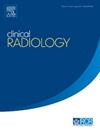Exploring the therapeutic potential of ultrasound-guided nerve hydrodissection: a comprehensive retrospective analysis
IF 2.1
3区 医学
Q2 RADIOLOGY, NUCLEAR MEDICINE & MEDICAL IMAGING
引用次数: 0
Abstract
Aim
To determine the efficacy of ultrasound-guided nerve hydrodissection for the clinical improvement of commonly entrapped peripheral nerves.
Materials and methods
A retrospective review of patient information was conducted for the period of Jan 2015-Dec 2020. Potential patients were identified using a keyword search for ‘hydrodissection’ and/or ‘perineural injection’ from radiology reports. Data included patient age, sex, intervention date, target peripheral nerve, pre-intervention clinical presentation, electromyography (EMG) data and patient outcomes at 3 weeks, 3 months and 6 months post-procedure. Outcomes included pain (as rated on the visual analog scale, 1–10), numbness, tingling, paraesthesias, mobility and others. The data were used to assess intervention efficacy based on each peripheral nerve as well as total peripheral nerves.
Results
Data were collected for 204 patients for various peripheral nerves. At the 3-week follow-up, 48% demonstrated minimal improvement, 18% demonstrated moderate improvement and 34% demonstrated significant improvement. At the 3-month follow-up, 52% demonstrated minimal improvement, 20% demonstrated moderate improvement and 28% demonstrated significant improvement. Finally, at the 6-month follow-up, 56% demonstrated minimal improvement, 14% demonstrated moderate improvement and 30% demonstrated significant improvement.
Conclusion
Moderate to significant clinical improvement was noted in half of the patients and minimal improvement in the remaining half of the patients who had undergone ultrasound-guided nerve hydrodissection. To date, there are few studies assessing the effectiveness of ultrasound-guided hydrodissection. These results therefore have implications for the use of this dynamic, percutaneous, ultrasound-guided intervention using steroid and local anaesthetic for multiple peripheral nerves.
探讨超声引导下神经水解剖的治疗潜力:一项全面的回顾性分析
目的探讨超声引导下神经水解剖术治疗常见周围神经卡压的临床疗效。材料与方法回顾性分析2015年1月至2020年12月期间的患者信息。使用关键词搜索放射学报告中的“hydrodissection”和/或“神经周围注射”来确定潜在患者。数据包括患者年龄、性别、干预日期、目标周围神经、干预前临床表现、肌电图(EMG)数据以及患者术后3周、3个月和6个月的结果。结果包括疼痛(按视觉模拟量表评分,1-10)、麻木、刺痛、感觉异常、活动能力等。以每条外周神经及总外周神经为指标评估干预效果。结果收集了204例患者的各种周围神经的数据。在3周的随访中,48%表现出轻微改善,18%表现出中度改善,34%表现出显著改善。在3个月的随访中,52%表现出轻微改善,20%表现出中度改善,28%表现出显著改善。最后,在6个月的随访中,56%表现出轻微改善,14%表现出中度改善,30%表现出显著改善。结论在超声引导下行神经水解术的患者中,有一半的患者有中度到显著的临床改善,其余一半的患者有轻微的改善。迄今为止,很少有研究评估超声引导下的水解剖效果。因此,这些结果对使用这种动态的、经皮的、超声引导的、使用类固醇和局部麻醉的多周围神经介入治疗具有重要意义。
本文章由计算机程序翻译,如有差异,请以英文原文为准。
求助全文
约1分钟内获得全文
求助全文
来源期刊

Clinical radiology
医学-核医学
CiteScore
4.70
自引率
3.80%
发文量
528
审稿时长
76 days
期刊介绍:
Clinical Radiology is published by Elsevier on behalf of The Royal College of Radiologists. Clinical Radiology is an International Journal bringing you original research, editorials and review articles on all aspects of diagnostic imaging, including:
• Computed tomography
• Magnetic resonance imaging
• Ultrasonography
• Digital radiology
• Interventional radiology
• Radiography
• Nuclear medicine
Papers on radiological protection, quality assurance, audit in radiology and matters relating to radiological training and education are also included. In addition, each issue contains correspondence, book reviews and notices of forthcoming events.
 求助内容:
求助内容: 应助结果提醒方式:
应助结果提醒方式:


